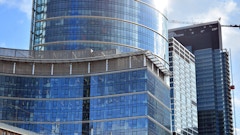
The Future Envelope 13 – Conference on Building Envelopes
User centred façades | The Future Envelope 13 – Conference on Building Envelopes | During the 13th edition of the annual conference, twelve international speakers from research, industry, management and design will share their experience and visions of the future building envelope.

















